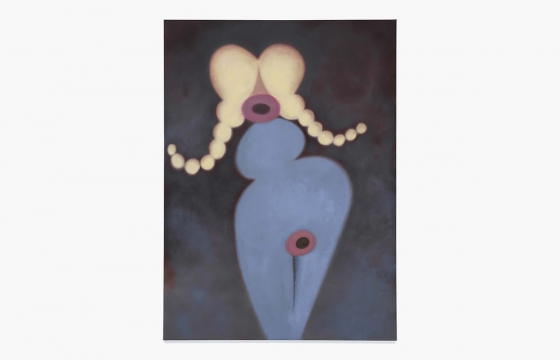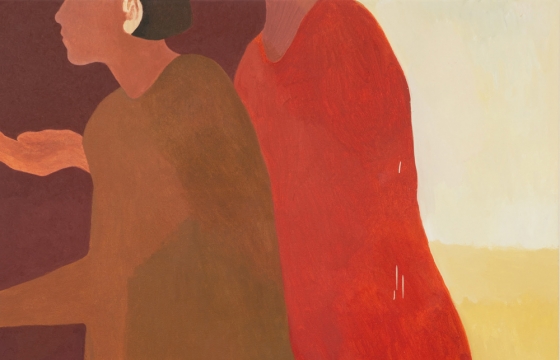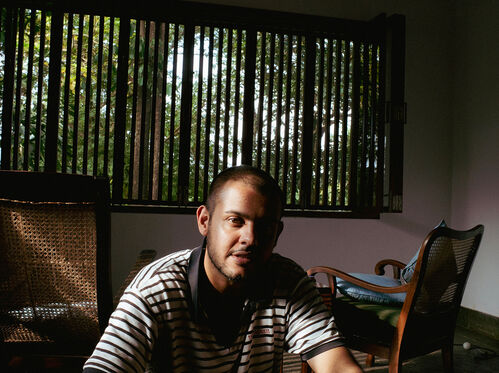Top 10 Ways to Get into a Gallery
Jack MacGowan shares his expertise on developing relationships with galleries, and shares tips for readiness and success.
The post Top 10 Ways to Get into a Gallery appeared first on Artsy Shark.
Jack MacGowan shares his expertise on developing relationships with galleries, and shares tips for readiness and success.
The post Top 10 Ways to Get into a Gallery appeared first on Artsy Shark.



Indian artist Sohrab Hura has been awarded the Eye Art & Film Prize 2025, an annual award celebrating the achievements of an artist whose work bridges visual art and film. The prize comes with a €30,000 ($33,800) grant to support a solo exhibition at Amsterdam’s Eye Filmmuseum, which administers the award.
“Hura’s work is distinguished by its emotional intensity, formal innovation, and a bold approach to navigating the space between art and film,” the prize’s jurors said in a joint statement.
Born in Chinsurah, India in 1981, Hura did not originally pursue photography, instead completing a master’s degree at the Delhi School of Economics. He started taking photographs in college after his father gave him a Nikon FM10 camera.
Today, Hura is recognized for his surreal photography and film examining social and political belonging. Among his best-known works is the photobook trilogy Sweet Life, comprising the books Life is Elsewhere (2015), A Proposition for Departure (2017), and Look It’s Getting Sunny Outside!!! (2018). This trilogy deals with the artist’s relationship to his mother, who was diagnosed with paranoid schizophrenia when he was 17 years old.
Switching between film and still photography, Hura often focuses on landscapes, climates, and cultural multiplicities of India, where he captures scenes from everyday life. His photographic series such as “Snow” or “The Song of Sparrows in a Hundred Days of Summer” engage with the country’s seasonal extremes. Meanwhile, one of his first projects, “Land of a Thousand Struggles” (2005–06), documented a grassroots political movement in rural India that organized in support of the passage of social security provisions.
Hura’s first U.S. survey, “Mother,” opened last year at MoMA PS1. Recent solo exhibitions have been staged by Experimenter in Mumbai and Peckham 24 in London, among others. Hura is a member of the photo cooperative Magnum Photos.
Established in 2015, the Eye Art & Film Prize has been awarded to artists including Chia-Wei Hsu in 2024, Garrett Bradley in 2023, and Saodat Ismailova in 2022. The inaugural prize winner was German filmmaker Hito Steyerl.

Picture of Two Men with Painting, 2003
Bruce Adams
Resource Art
Does one size fit all when it comes to artist representation? One of the defining tenets of the art world is the relationship between artists and the galleries that work with them. This is mostly referred to in terms of representation, formalized professional relationships in which a gallery promotes, exhibits, and sells an artist’s work on their behalf.
Good gallery representation can open doors and provide the financial support an artist needs to launch their career into the stratosphere, but there’s no uniform approach to this delicate bond.
While traditional models of artist representation—governed by rigid protocols and exclusivity clauses—have helped to propel some artists to blue-chip status, galleries are increasingly turning to new formats that sync with the reality of artists today.

“Many emerging Thai artists juggle multiple roles, including teaching, freelancing, and working on personal projects. Expecting them to commit exclusively to one gallery is often unrealistic,” said Bryce Watanasoponwong, who opened his artist-run gallery The Charoen AArt last year out of his childhood home in Bangkok.
Typical representation models often don’t reflect this complexity, and with the rise of digital platforms and evolving market dynamics turning the industry on its head, more adaptable systems have begun to emerge. Artists are also increasingly taking on representation through multiple galleries, or choose to go it solo, opting instead to self-promote their work through digital media.
As a new crop of gallerists navigate how to build a sustainable model, maintaining open dialogue and tempering expectations are key. Watanasoponwong has honed his gallery’s onboarding process for representation “to ensure everyone understands their shared responsibilities.” This takes on particular importance when it comes to sales of their artworks: “We believe sales are a collaborative result, not the sole responsibility of the gallery or the artist,” he said. “The gallery provides context and visibility, while the artist remains engaged.”

It’s a sentiment that echoes across other value-driven galleries, where relationship building is rooted as much in communication as in contracts.
As Unveil Gallery co-founder Lorraine Han explained to Artsy: “In contrast to traditional gallery representation, which can sometimes feel transactional or commercially driven, we view our role as partners, amplifiers, and facilitators. Transparency and mutual respect help keep the relationship strong, even during the tougher stretches.”
A similar ethos guides Superposition’s Storm Ascher, who launched her nomadic gallery in 2018. “Trust isn’t transactional; it’s earned over time through shared intentions, through consistency, and through real investment in one another’s practices and lives.”
This long-term, slow-and-steady support has paid off for artist Haleigh Nickerson. Seven years after showing works in Superposition’s inaugural exhibition, she made her East Coast debut with a solo show at the gallery’s NADA New York 2025 booth—a major milestone in their shared evolution. “Growth for us has always been about growing with the artists, not apart from them,” Ascher told Artsy. “These moments [are about] honoring the relationships that have been at the core of everything we’ve built.”

This slower, more grounded pace allows time for both the artist and gallery to breathe, but it is not without risk; trusting the process remains a financial gamble. No matter how uplifting their mission statements may be, galleries are still businesses that must sell work to survive. “For a smaller gallery, it’s a constant balancing act between championing ambitious, meaningful work and managing practical constraints,” Rachel Lee, director of Soluna Fine Art, told Artsy.
This is particularly notable when galleries expand their curatorial programs to include more experimental and installation-based work (as opposed to more marketable media like painting, work on paper, and sculpture). “These types of works often require higher production and installation costs, whether it’s fabrication, materials, or specialized handling,” Lee explained, adding that one solution is to forgo exclusive representation in favor of project-based or time-bound collaborations. “This gives both the gallery and the artist more room to grow and evolve. We aim to build relationships based on mutual respect and long-term vision, rather than rigid contracts.”

For Ambar Quijano, whose namesake gallery in Mexico City opened in 2020, tempering her personal attachments with the reality of the art market has posed creative challenges. “Many of the artists I collaborate with have practices that don’t fit neatly into commercial expectations, and while that’s precisely what makes their work meaningful, it can also make it more challenging to place. In these cases, conversation becomes a key part of the process,” she told Artsy. “I find great joy in engaging deeply with collectors, helping them understand what makes a particular work significant. Not every work is meant for a private collection, and in fact, some are better suited for public spaces, institutional collections, or foundations.”
A deeper engagement between collector and gallerist doesn’t just build lasting buy-in, it also helps to keep the lights on.
For small galleries whose artists lean more experimental, methodically cultivating this understanding is often the only viable strategy. And ultimately, adaptability provides the spark for longevity. More traditional forms of representation will always have their place in the industry, but the future of these relationships may well be shaped by new takes on the existing system.
“We can move quickly, adapt to the artist’s evolving needs, and take risks that larger structures often avoid. Whether that’s an unconventional exhibition format or an alternative placement strategy, we’re not bound by rigid protocols,” explained Quijano. “We offer depth—and that’s not something that can be easily replicated.”

German-American art collector Artur Walther’s promised gift to the museum includes iconic modern and contemporary images from Africa, China, Japan, and beyond.

From ceramic alligators to Nordic traditions, artists focusing on personal concerns and identity are making some fascinating work.